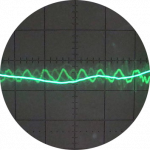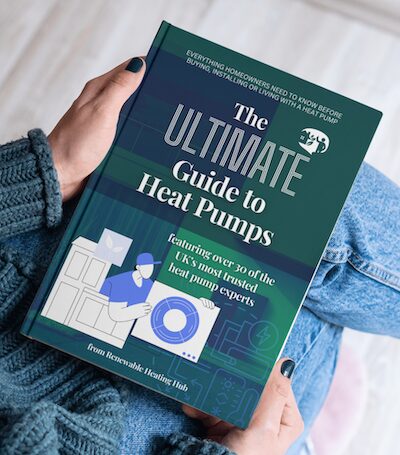@crimson gnaaah, just noticed you've got a bypass as well. In the high head loss situation you are trying to balance against, the bypass will probably be opening, which will take flow away from the radiators.
you should not have a bypass in an ASHP system with always on radiators. That dates from boiler and TRV days when it was possible for all radiators to shutdown.
remove the component marked by capping the pipes marked with red X.
My octopus signup link https://share.octopus.energy/ebony-deer-230
210m2 house, Samsung 16kw Gen6 ASHP Self installed: Single circulation loop , PWM modulating pump.
My public ASHP stats: https://heatpumpmonitor.org/system/view?id=45
11.9kWp of PV
41kWh of Battery storage (3x Powerwall 2)
2x BEVs
Thanks all. I’ll try and summarise this back to builder - and list that back here.
Playing devils advocate, if plumbers feel they’ve done install to spec. Upstairs, and underfloor heating zones perform well. I just wonder how can get to a point of a rectification of errors. The logical thing would simply be upsize the downstairs rads.
What worries me is looking at Dereks suggestion of check room volume v watt output, how a room with 120% watt output v a first floor room that’s 50% smaller can completely underperform.
In terms of piping, first floor seems to have the same pipes, so surely that would have issues also? This would also apply to delta 20 v 16.5 correction factors errors. This is where I’m struggling to get them to acknowledge the overall issue. However it’s clear, in the plant room alone seem to lose 1C. Then to the zones a further 2C approx. So before even look at what rads take out the system 3C has been lost. And they had full reign to pick the best pipes etc etc.
Just trying to account for what they’ll say back and have something ready in return.
Can’t thank you all enough for looking at all this.
Posted by: @crimsonThanks all. I’ll try and summarise this back to builder - and list that back here.
Playing devils advocate, if plumbers feel they’ve done install to spec. Upstairs, and underfloor heating zones perform well. I just wonder how can get to a point of a rectification of errors. The logical thing would simply be upsize the downstairs rads.
What worries me is looking at Dereks suggestion of check room volume v watt output, how a room with 120% watt output v a first floor room that’s 50% smaller can completely underperform.
In terms of piping, first floor seems to have the same pipes, so surely that would have issues also? This would also apply to delta 20 v 16.5 correction factors errors. This is where I’m struggling to get them to acknowledge the overall issue. However it’s clear, in the plant room alone seem to lose 1C. Then to the zones a further 2C approx. So before even look at what rads take out the system 3C has been lost. And they had full reign to pick the best pipes etc etc.
Just trying to account for what they’ll say back and have something ready in return.
Can’t thank you all enough for looking at all this.
As suggested previously, did you check the accuracy of all the temperature sensors against each other? You also do not appear to have carried out the 1 hour temperature test that I suggested.
Are your temperature measurements actually accurate? How are you attaching the temperature sensors to the pipework? Are they making good thermal contact?
Try the following:-
Place the temperature sensor on a straight section of pipe, preferably with thermal paste.
Wrap bare wire (electrical cable with the insulation removed or something similar) tightly around the pipe and the sensor to try to ensure good physical contact.
Then wrap aluminium foil around around the pipe and sensor.
Cover the whole assembly with clingfilm.
Place pipe insulation over the whole assembly.
The above should hopefully provide accurate temperature measurements and allow necessary testing to be performed.
Hi Derek, sorry hadn’t got to that yet. I have some time off in a couple of weeks and should be able to do some proper calibration and mounting of probes at that point. The 1 hour findings proves difficult as it’s a case of running whilst a cycle hits. I’ll see if can do that at some point.
In terms of probes most variance I see with 2-3 in same place is around .1-2C, so I typically look at how big a difference overall there can be. I’ll see in meantime if placing more probes top right of LLH and pipe to downstairs and upstairs zones if that still shows a consistent 1C drop and then the drop the rads, which seems to be consistently a further 2C across up stairs and downstairs rads when secondary pump speed at 3/3, prior to that upstairs at some rads tended to get bigger temps. The flip side of that is that speed 3/3 seems to decrease the delta across the LLH and so that cycles more. Overall I guess pointing to all the imbalance caused by the plumbers install choices.
My thinking at the moment is that the plumbers are going to hold fast and do the rad upsizing as last possible measure. The fact they haven’t come to see the performance lately doesn’t fill me with much hope. There’s a clear performance diff upstairs v downstairs. The weather curve on 40C and with settings placing it running (when it does cycle) puts the LWT at 35C. Upstairs with lockshields virtually shut and windows open still pushes 20C, landing area 21C and got there quickly yesterday after it was fully off for a while. So I can’t pull that temp down to more comfortable levels without using the TRVs or heatmiser panel whilst maintaining longer ASHP cycles to at least get the downstairs above 19C (otherwise sits around 18.5C).
Meanwhile downstairs is reported at 20C on the heatmiser panel and 19C in living rooms. The imbalance of the house can really be felt when walking from rear downstairs to front and upstairs to front of downstairs.
@crimson another sanity check, are you sure that UP/DOWN/UFH are correctly identified on those 3 valves?
I do take your point that you think upstairs and downstairs have the same pipe sizes and topology, this is puzzling. are you able to work out any more detail on this?
In your plant room, you have a lot of pipework, all exposed. I presume its fairly warm in there? Lagging that pipework will help with temp loss although likely not the root cause.
higher speed/head on the secondary will help the water flow get to the worst rads, but unfortunately because you have an LLH this pushes the LLH balance out meaning the actual WT can drop on the secondary side. This is a catch-22 with the system design you have. If you are prepared to take the bold step and do what has been suggested by several, rebuild it as a single loop, then running with a higher head doesn't imbalance the LLH because there isn't one.
downstairs rad upsizing can only help the issue you have, because you'll increase the output for the same WT. you actually want to be able to drop the system WT so that upstairs doesn't overheat.
My octopus signup link https://share.octopus.energy/ebony-deer-230
210m2 house, Samsung 16kw Gen6 ASHP Self installed: Single circulation loop , PWM modulating pump.
My public ASHP stats: https://heatpumpmonitor.org/system/view?id=45
11.9kWp of PV
41kWh of Battery storage (3x Powerwall 2)
2x BEVs
Thanks @iancalderbank
The plant room is lagged, that photo was taken prior to that being done and the LLH install being correct (Was wrong way round) - just shared as easier to see the pipe work itself. (have now attached a photo taken when it was lagged - ignore the temp there, this was when was running a higher LWT than now).
I'm going to see if can get more detail on upstairs from the plumbers but they've not been forthcoming lately. I can share photos that show the rear of downstairs which can see pipe work, looks plastic etc as before. What I'll do today if time around work is try using the non-lagged photo and annotate to indicate what pipe is what having followed them around.
I'd happily go for killing the LLH etc. I think the battle I have atm is as the project isn't complete, but we're right near the end, try to get what I can from the plumbers on this install (be it up size the downstairs rads). Then will look at budget for a change after. Obviously, try at same time to push them as much as possible to rectify the overall install as far as I can.
I've realised that it's probably hard to explain the layout of the house so have attached the simplest floor plan I have to hand. Things to note - the ensuite1 is reversed layout but makes no difference to what we're discussing. Also ignore Thermal store, this was just the architect indicating a space the plant room takes - and it's not up to date as the plant room takes up more of the utility than shown here. I have roughly marked out the distinction in the UFH zone and what's considered the downstairs zone also.
For context, the areas noted as kitchen, dining and utility are all on underfloor. That appears to be 2 sub zones (kitchen/dining = 1, utility = 1), using the one valve in the plant room marked as UFH.
Living 2 has 2 eskimo rads (1 963 wide, 1 1649 wide), as does Living 1 (2x 1451 wide), hall has a tall Eskimo rad, the W/C has a Florina Reina towel rad. This is called the Downstairs zone and is the one I'm struggling with.
Upstairs, all the bedrooms have 2 Stelrads (1000x400), landing is 1000x600, main bathroom has a tall rad and a towel rad and en-suite has a towel rad. This is considered the upstairs zone. As you can see the bathroom, en-suite and bed 3 and bed 4 extend over the rear downstairs portion of the house (hence me saying there's technically more pipe work for upstairs v downstairs if that makes sense).
I think this is what the heat specialist was referring to about the downstairs being such a small zone, the Eskimo rads are noted as having 1/4 the water capacity in them too v standard steel rads.
Purely from a rad count POV, Downstairs = 6 rads, upstairs = 12 rads
Posted by: @derek-mThe idea behind the 1 hour recording of temperatures at 1 minute intervals is precisely to try to see what is happening during a cycle.
Thanks Derek, I probably wasn't very clear. It's finding a time when a cycle actually runs that I'm finding difficult currently as it's not often. Soon as I have time and see one kick in I'll do that and report back.
Sorry @derek-m , setting up a spreadsheet now.
I reckon quickest I could do this is every 5 minutes due to the Grant panel takes time to actually get to the LWT and RWT readings.
So we'd want:
Grant LWT (panel reported)
Grant RWT (panel reported)
LLH LWT (top right - probe reported)
LLH LWT (top left - probe reported)
LLH RWT (bottom left - probe reported)
LLH RWT (bottom right - probe reported)
Living 2 (probe reported) - Rad 1 - lock shield side? or both TRV and lock shield sides?
Living 2 (probe reported) - Rad 2 - lock shield side? or both TRV and lock shield sides?
The thermal energy output of the Eskimo radiators is stated as being greater than other types of radiators for a given physical size. Is this correct?
Did the plumbers flush all the pipework prior to filling the system? I wonder if there is some foreign body in the downstairs pipework that is limiting the flowrate.
The idea is to try to see how the thermal energy flows around the system, which may provide some clues as to where the problem is located.
Another test could be to put some temperature sensors on the pipework upstairs and downstairs and see which warms up first, which may indicate where the maximum flowrate is occurring.
- 26 Forums
- 2,360 Topics
- 53.5 K Posts
- 309 Online
- 6,026 Members
Join Us!
Worth Watching
Latest Posts
-
RE: Mitsubishi Ecodan R290 10kW performance
@jamespa Here's an update to my previous post. Mitsubis...
By Ecoste , 18 minutes ago
-
RE: Octopus Cosy Heat Pump Owners & Discussion Thread
Bearing in mind that Octopus can apparently monitor our...
By KevH , 2 hours ago
-

RE: Speedcomfort radiator fans
My take on Speedcomfort radiator fans: If anyone w...
By Mars , 3 hours ago
-
RE: Midea ASHP – how to set weather compensation
@pash44pump I have yet to come across any Clivet or Mid...
By benson , 3 hours ago
-
RE: Who's your electricity provider and what's your tariff?
@transparent Thanks, this helps. Could it be that St...
By Batpred , 3 hours ago
-
RE: Clivet ASHPs and weather compensation
Simon did share a lot of very helpful advice. On furthe...
By ambris , 3 hours ago
-
My Powerwall 3 Consumes 3-4 kWh/Day in Self-Consumption: Is This Normal?
I had solar panels & Powerwall 3 installed in Augus...
By Caron , 5 hours ago
-
-
MyVaillant Connect Regular Disconnect
A couple of weeks ago the MyVaillant Controller had a r...
By buckwem , 16 hours ago
-

RE: Setback savings - fact or fiction?
I could, but I think we can do better, by plotting hour...
By cathodeRay , 21 hours ago
-
RE: Advice on internal circulation pump noise
Extend the primary branch and make sure you have more t...
By ASHP-BOBBA , 23 hours ago
-

RE: External pipework insulation
Oh Dear! that's appalling pipe work, should've been in ...
By dgclimatecontrol , 1 day ago
-

RE: Jokes and fun posts about heat pumps and renewables
By Morgan , 1 day ago
-

RE: Controlling Daikin Altherma via P1P2 and Home Assistant
On the contrary, @toodles, that’s a lot of help. I’d ne...
By Majordennisbloodnok , 1 day ago
-

Parsnip, Bacon & Coconut Milk Soup
First let me say, I am only a cook because I am human a...
By Toodles , 2 days ago
-
RE: Electricity price predictions
Ben Watts posted on LinkedIn that he had updated this w...
By Judith , 2 days ago
-

RE: The good, the bad and the not that great – my heat pump installation
Small update, Emailed and Spoke to Midea UK and they ...
By Burtis , 2 days ago
-
RE: Solis S6-EH1P8K-L-PLUS – Why I Chose It and What I’ve Learned So Far
@bash Octopus does charge for the admin. The process al...
By Batpred , 2 days ago










